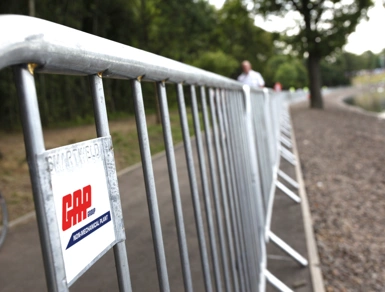What is a Chapter 8 Barrier?
Chapter 8 Barriers are temporary road safety barriers designed specifically for managing traffic and protecting workers and the public during roadworks, construction projects, and public events.
They are named after Chapter 8 of the Traffic Signs Manual, published by the UK Department for Transport, which sets out the rules for temporary traffic management on public roads.
Key features of Chapter 8 Barriers:
- High-visibility red and white design

- Reflective stripe for nighttime visibility
- Suitable for public roads and motorways
- Lightweight and interlocking structure for quick deployment
- Durable materials suitable for repeated use
- Fully compliant with Chapter 8 visibility, layout and spacing standards
When to Use Them:
Chapter 8 barriers are a legal requirement for most road and utility works. Local authorities, contractors and event organisers rely on them to ensure compliance with UK safety laws. Failure to use proper Chapter 8 barriers can result in fines or legal action in the event of accident, or injury.
What are Standard Barriers?
Standard barriers refer to a much broader category of physical barriers that may or may not meet Chapter 8 requirements.
These include:
- Water-filled barriers

- Concrete barriers
- Steel crash barriers
- Crowd control barriers
- Temporary fencing or hoarding
These are ideal for private land, construction sites, warehouses or indoor settings where Chapter 8 compliance is not required. While they provide physical separation and protection, they may lack the high-visibility features needed for public highways.
A Common Misconception: “All Barriers are Chapter 8”
Not true. Just because a barrier is placed near roadworks doesn’t mean it meets Chapter 8 standards. To comply, barriers must:
- Provide clear visibility day and night
- Be lightweight and interlocking
- Be safely deployed and removed
- Comply with UK road safety regulations
Chapter 8 vs Standard Barriers: When to Use Each
- Choose Chapter 8 barriers
For public roads, highways, utility maintenance, land closures, or anywhere traffic management compliance is needed.
- Choose Standard barriers
For general construction, events, or crowd control, particularly on private property, or non-traffic environments
Stay Compliant. Stay Safe.
Chapter 8 barriers aren’t optional, they’re essential for road safety compliance. Knowing the difference ensures your site runs smoothly, keeps workers safe, and avoids costly legal issues.
Hire Chapter 8 and Standard Barriers from GAP
Looking to hire Chapter 8 barriers or standard safety barriers? GAP’s Non-Mechanical Plant division supplies a full range of compliant traffic management barriers to keep your projects moving safely.



